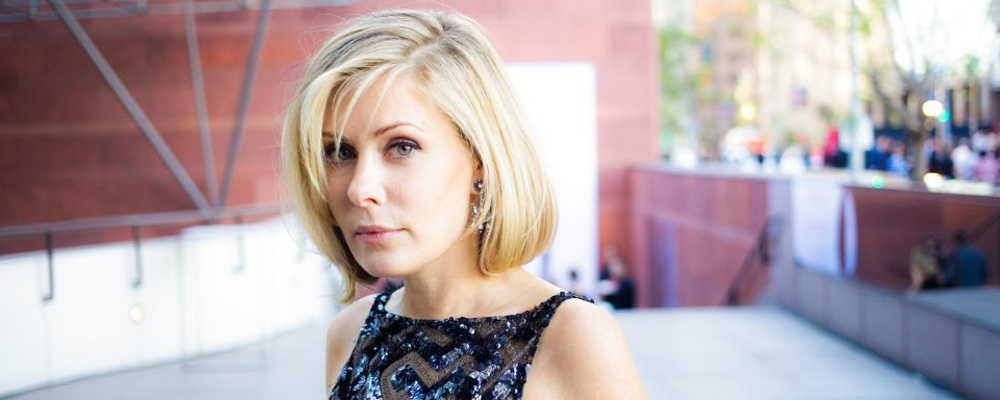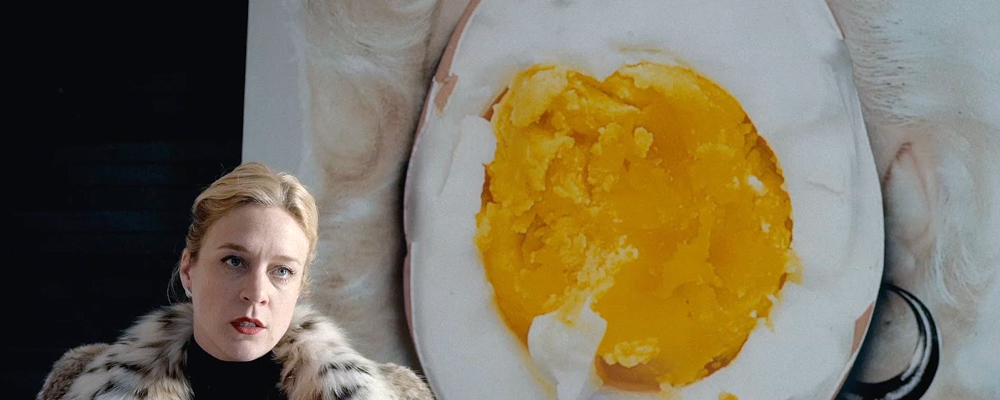Tara Subkoff on Art, Our Dependence to Social Media and Her New Film ‘#Horror’
Sandra Miska
Tara Subkoff has worn many hats throughout her career. As an actress, she has appeared in films such as “As Good as It Gets,” “The Last Days of Disco,” and “The Cell.” In 2001, she shifted her focus to art when she founded the conceptual art project/fashion label Imitation of Christ. Now with her directorial debut “#Horror,” a film she wrote and co-produced, she can now add ‘filmmaker’ to the list.
Subkoff, who calls New York home, recently spoke with Entertainment Voice about “#Horror,” her love of that genre, her longstanding friendship with Chloë Sevigny, and how making a film is just another collaborative art project.
What inspired you to make a horror film as your first movie?
I love the genre. I love horror, thriller and sci-fi. Growing up, [my brother and I] were really into horror, but we weren’t allowed to watch it. My dad used to have a store on 13th and Broadway and he sold antiques. I think antiques alone are something very scary, especially as a kid. And the store . . . we’d always get lost in the store. And across the street . . . was a store called Forbidden Planet, which is a total genre, sci-fi store that’s historic, and we would just get lost in there reading and finding weird things. So I sort of grew up like that.
How was it writing the script? How did you come up with the story?
It was inspired by some things that happened to my friends’ kids. Obviously, I creatively went much further with it…. But it was definitely inspired by real-life meanness and cruelty. I find that having someone you really know turning or losing it, I find that more terrifying than anything else. Just the idea of, can you really trust anyone? To me, that is a horrifying concept. I think the greatest horror films of all time, like “The Shining,” are that story. I find that psychological horror much more interesting.
What are some other horror films that inspire you?
Oh, gosh. All the classics, like “Poltergeist,” “Videodrome,” “The Exorcist,” “The Omen.” I’m a huge Wes Craven fan, like early Wes Craven – “Last House on the Left,” “The People Under the Stairs,” all the “Nightmare on Elm Street” [films], of course. I’m from the ‘80s, so all the ‘80’s stuff – “The Texas Chain Saw Massacre.” There’s so many. There’s too many to list. And I love all Stephen King, novels and films. I’m a huge Stephen King fan. And Clive Barker, I’m a huge Clive Barker fan, too.
Was it very daunting to work with so many minor actors while directing your first film?
I think it was definitely challenging. I’m not a parent. My husband has a six year old, but I don’t have a child of my own. I think it’s really different when you have that, but I think you have to learn a whole other level of patience that I may not posses myself, but I’m working on it. I think it’s challenging to do and … what you don’t realize is that when you’re working with minors you’re also working with their parents. So, that’s a lot. There were six girls and each of them has two parents, so that’s a lot of people in the mix. But we made it work; They were so cooperative. The girls were great. This was their first movie, most of them or their first starring role, and they really rose to the occasion and they were very inspired working with Chloë Sevigny and Tim Hutton and Natasha Lyonne.
There’s a lot of cool art in the film, mainly in the house. Was that art that was created for the film?
No, no. Most of [the artists] were friends of mine for a long time … and now they’re very successful art stars. I love their work. I’ve always been a big fan of their work, people like Dan Colen and Rob Pruitt, and my husband Urs Fischer’s work is also in there, and it’s incredible; it’s the egg that was animated.
That was my favorite, that egg.
I wanted all of the art to have a feeling of danger to it…. So it was incredible to have Francesco Clemente and Julian Schnabel. It was incredible to have them lend such great pieces to such a tiny movie. I think that’s probably historical. I don’t think that’s ever happened with a budget like this, to have that level of production value with the art. Francesco Clemente, he made a joke. He said, “You know Tara, that [an] art director usually just says to some person working on the art team, ‘Just make a Francesco Clemente. Make something that looks like a Francesco Clemente.’” So to have an actual painting is really special. And I think it has a certain energy because I believe that objects have a feeling, and all of that created a certain ambience and a certain feeling to the film.
You and Chloë have known each other for years and have worked together on numerous projects. How did that friendship and partnership come about?
I met Chloë in the ‘90s, early ‘90s. It was Allison Anders’ house. She had a barbeque in Topanga Canyon, out here. I was out here from New York. I met her there, and she was very cool, and I was not as cool as her. I’ve always been more of a dork. I just remember she was wearing a really cool punk jacket that said, like, “The Slits.” She’s always been so cool and I was in awe of her. “Kids” had just come out, and it was really exciting. She kinda blew up and was this indie star right away. And then we worked together on “Last Days of Disco” with Whit Stillman. I had a very small role where I said almost nothing. I played the roommate and she had the lead. I had this whole scene with her where I had this monologue and Whit Stillman had me do it almost 50 times, and it was so brutal. It was so brutal and we just became friends right away. After that, we were pretty inseparable.
How did your experience as an actress and a designer prepare you to be a director?
I’ve always wanted to direct film. But I think it helped to act for all those years. I acted for about ten years then I did Imitation of Christ for another ten years after that. I think both of those things totally contributed to being able to understand what it is to act, and being able to direct actors from an inside position. I worked with so many models and tried to get them to act, and dancers, and actors and street performers, and musicians, and clowns and people on stilts and all kinds of people for these performances. Tightrope walkers. I worked with some horseback riders. I’ve worked with a lot of people and have done a lot of strange or out-of-the-box performances. That definitely prepared me for this but at the same time I think I was totally unprepared. I really felt like I was more prepared than I actually was. I think anyone who’s honest about making their first film, it’s so overwhelming and there are so many components, and there are so many moving parts and there are so many people…. And you have to be so organized and on top of things. I think it is probably one of the hardest things to accomplish, especially to accomplish well. I think it’s a really challenging medium.
Would you do it again?
Definitely. Definitely. I’m a total masochist [laughs].
Do you already have another film planned?
I’m writing something right now.
What do you hope people take away from “#Horror”? Is it to step away from social media more?
I think whenever you make something and it’s really true to you, there’s not a moral to the story. I want people to take away what they take away from it. Whatever they feel, that’s what they should take away from it. And that’s what I think is art, or is good film, or is something that is real. I don’t think I can direct that. And as a control freak, that’s saying a lot.
Do you have any advice for any artists or actors out there who are looking to get into directing?
I think people should follow their dreams and make work that they feel is important to them, and tell stories that are hard to tell, that are hard to write, that don’t come easily. I think we’re in a time that’s incredibly narcissistic and dangerous. We’re less connected with each other, and less connected to stories that are meaningful and more connected to promotion, as if we’re all brands. I think that’s dangerous and we’re losing compassion and empathy at a rapid rate. I think telling stories that connect us back to our hearts, or connect us or scare us about this, I think are really important….
“#Horror” opens in select theaters and VOD Nov. 20.



